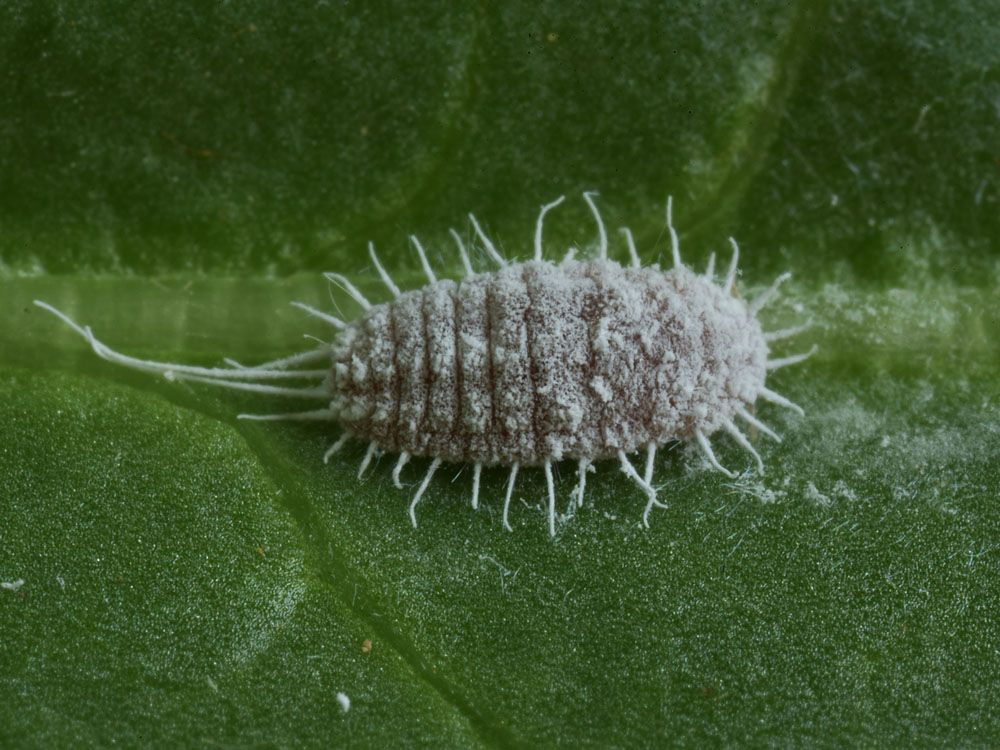
Longtailed Mealybugs – Pseudoccus longispinus
Longtailed Mealybugs (Pseudoccus longispinus)
Common Name: Longtailed Mealybugs
Latin Name: Pseudoccus longispinus
Appearance:
- Female Pseudococcus longispinus mealybugs contain 17 pairs of waxy filaments around the periphery and can grow up to 1/8 inch long.
- The caudal (tail) filaments on mature specimens are as long as or longer than the yellowish to the grey body (unless the tail filaments have broken off).
- The overall length is maybe 1/4 inch. The filaments surrounding the margins of nymphs are shorter than those of adult females.
- Most mealybug species lay their eggs in a dense, waxy mass called the ovisac, but the eggs of the long tailed mealybug hatch nearly quickly, giving the impression that they are born alive. Males pupate in a waffle-like cocoon.
Host plant:
Long-tailed mealybugs have been discovered in at least 26 plant families. Although Dracaena appears to be the preferred host, most blooming and decorative foliage plants are vulnerable.
Damages caused by Longtailed Mealybugs:
Mealybugs feed on phloem sap. When prevalent, they can diminish tree vigor, pollute plants with sticky honeydew, and stimulate the formation of blackish sooty mold, which contaminates fruit. Mealybug populations are often relatively low in avocado. They are sometimes pests of young trees. Longtailed mealybugs, which can become widespread in late winter to early spring, have occasionally injured new scion grafts on old (top-worked) trees.
Life history and habits:
The long-tailed mealy bug’s lengthy, posterior tail filaments are at least the length of the body itself. The other filaments are nearly half the breadth of the body. The female measures 3 to 4 mm in length. Pseudococcus longispinus reproduction can be sexual or asexual, with the latter appearing to be the more typical occurrence. Pseudococcus longispinus, unlike most other mealy bugs, does not lay eggs. Female bears live young, depositing previously hatched first instars that are first maintained beneath the body in a network of tiny sticky threads. A female produces 100-200 nymphs during two or three weeks. The life cycle spans around six weeks and about 12 weeks in the winter.
